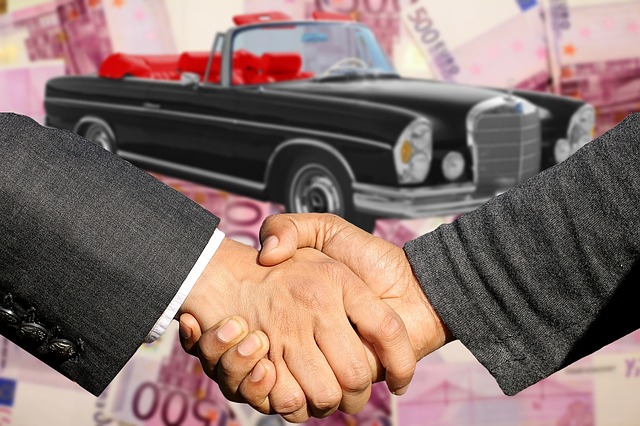Don't scrap your damaged car – consider selling or trading it in. Evaluate damage, market trends, and repair costs, using trade-in calculators and local buyers specializing in damaged vehicles for hassle-free transactions. Prepare properly by documenting damage and updating paperwork before listing, ensuring a clean presentation to maximize buyer interest. Choose between private sales, used car brokers, online platforms, or dealerships based on your needs, conducting thorough market research to set fair prices. Avoid common mistakes like underestimating repair costs or unrealistic pricing, focusing on transparency for successful sales.
Need quick cash? If you have a damaged car, selling it doesn’t have to be a challenge. In this guide, we’ll walk you through the process of selecting and selling your vehicle for top dollar, despite its condition. From understanding the hidden value of damaged cars to avoiding common pitfalls, these insights will empower you to make the most of your investment. Let’s explore how to turn that old, banged-up ride into fast, hassle-free cash.
- Understanding the Value of Damaged Cars
- The Process of Selling a Damaged Vehicle
- Maximizing Your Return on Investment
- Common Pitfalls to Avoid When Selling Damaged Cars
Understanding the Value of Damaged Cars

Many people overlook the potential value hidden within their damaged cars. When a vehicle suffers damages, it doesn’t automatically become worthless. In fact, there’s often a significant market for such vehicles, especially when it comes to finding parts or repairing other less severe cases. Understanding the worth of your damaged car is crucial before making any hasty decisions. It could be a viable option to consider selling or trading it in rather than scrap it outright.
This process involves evaluating various factors: the extent of damage, current market trends for similar models, and available repair costs. A simple trade-in value calculator can offer an initial estimate, but it’s beneficial to reach out to local car buyers near you who specialize in purchasing damaged vehicles. They can provide a more accurate assessment and even offer a buying back your car solution, ensuring a hassle-free transaction.
The Process of Selling a Damaged Vehicle

Selling a damaged vehicle can be a straightforward process if you know where to begin. The first step is to assess your options and choose the best method for selling, whether that’s through a private sale or using a dedicated used car broker. Select the former if you prefer direct control over the transaction and want to avoid additional fees. Alternatively, brokers offer convenience and a quicker turnaround, but they may charge a fee for their services.
Once your decision is made, prepare your vehicle for sale by documenting any damage and ensuring all necessary paperwork is in order. This includes updating registration and insurance details if you’re no longer the primary owner. A clean and presentable car will attract more interested buyers, potentially leading to a faster sale and a better price, especially when competing against other similar vehicles on the market.
Maximizing Your Return on Investment

When considering quick cash for damaged cars, maximizing your return on investment is paramount. The first step in this process is to choose the right selling method. Opting to sell directly through a used car pricing guide or trading in an old car at a dealership can yield varying results. It’s essential to research and understand market values to set a fair price. Online platforms and private sales offer more flexibility but demand careful inspection and accurate representation of damage to attract buyers.
Selecting the best place to sell a car involves balancing convenience, reach, and potential returns. While local dealers might provide quick offers, they often have lower resale values due to their overhead costs. Specialized online marketplaces cater to damaged vehicles, connecting you with buyers who value such cars for repairs or parts. By presenting your vehicle accurately and considering these options, you can navigate the process efficiently, ensuring a favorable outcome in terms of both speed and monetary return.
Common Pitfalls to Avoid When Selling Damaged Cars

When selling a damaged car, it’s crucial to steer clear of certain pitfalls that can lead to financial losses or a prolonged sales process. One common trap is underestimating the cost of repairs needed to make the vehicle presentable for potential buyers. Always get accurate estimates from reputable mechanics before setting a sale price. This ensures you don’t set an unrealistically high asking price, which could deter interested parties, or too low a price, leaving money on the table.
Another trap to avoid is failing to highlight the advantages of selling to a private buyer versus using traditional car dealerships or online auction platforms. Private sellers can offer more flexibility in terms of price and negotiation, bypassing the markup associated with resellers. However, be prepared for a potentially longer sales cycle as you’ll need to market the vehicle independently and conduct direct negotiations with buyers. The car resale market overview reveals that transparency is key; clearly communicate the extent of damage and any outstanding repairs required to attract discerning buyers who value honesty over a flawless exterior.
Selling a damaged car can be a lucrative opportunity for those who know where to look. By understanding the value of these vehicles and navigating the process wisely, you can maximize your return on investment. Remember to avoid common pitfalls, like dishonest buyers or unfair pricing, by researching the market and choosing a reputable selling method, such as Select Selling a Vehicle. With the right approach, you can turn a potential liability into a financial gain.
